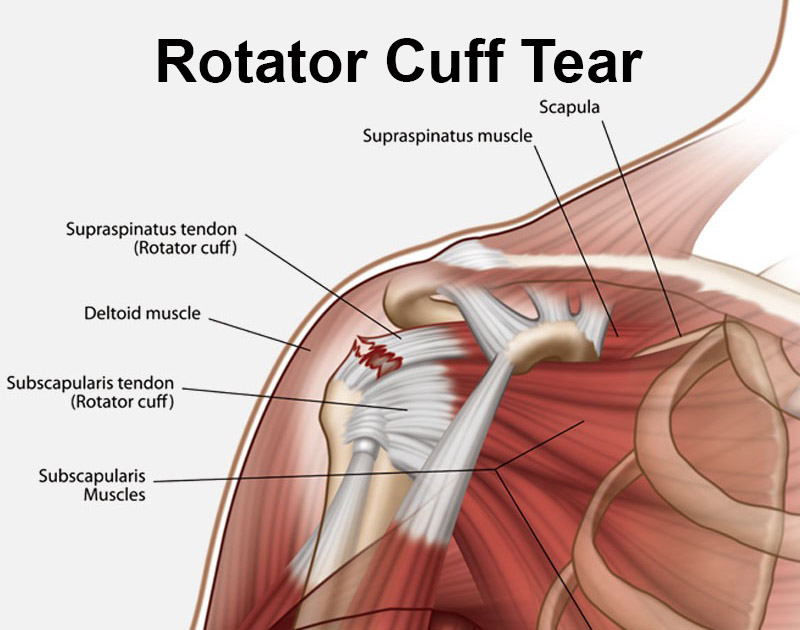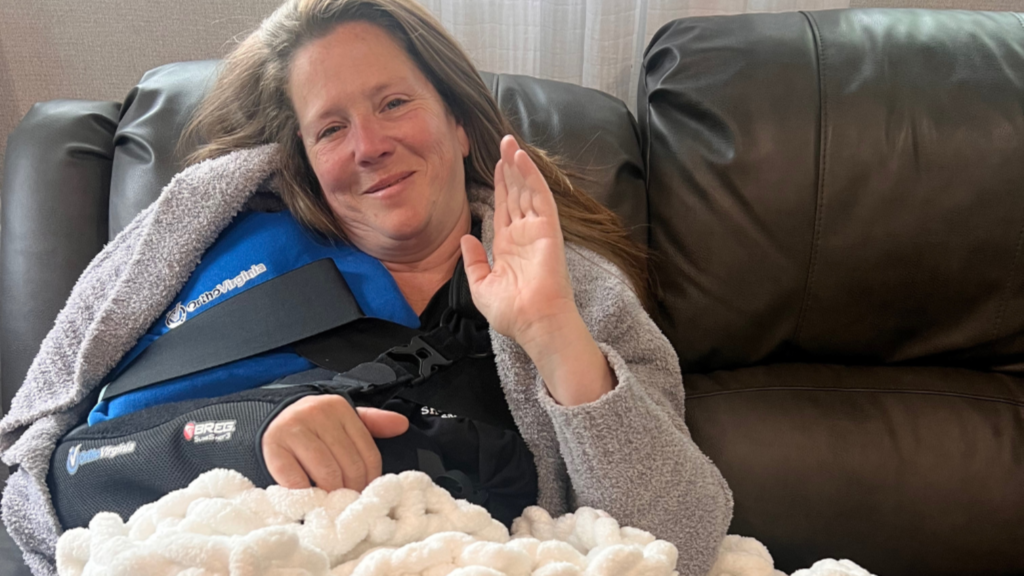Living on the Road with Rotator Cuff Tear: How to Recover After Surgery
Lisa and I have been living on the road full-time for the past three years. We love the freedom and adventure of traveling, but it’s not always easy. One of the challenges we’ve faced in 2023 is Lisa’s rotator cuff tear.

A rotator cuff tear is a tear in one or more of the tendons that surround the shoulder joint. It can be caused by a sudden injury, such as a fall or a lifting accident, or it can be caused by gradual wear and tear over time. Lisa thinks her injury came from falling down the steps inside our RV.
Rotator cuff tears are common in people over the age of 40, but they can happen to people of any age. They are more common in men than in women.
Symptoms of a Rotator Cuff Tear
The symptoms of a rotator cuff tear can vary depending on the severity of the tear. Some common symptoms include:
- Pain in the shoulder, especially when lifting or using the arm overhead
- Weakness in the shoulder
- Stiffness in the shoulder
- A clicking or popping sound in the shoulder
- Difficulty reaching overhead
- Difficulty sleeping on the affected side
Diagnosis of a Rotator Cuff Tear
The doctor will diagnose a rotator cuff tear by taking a medical history, performing a physical examination, and ordering imaging tests, such as an X-ray, MRI, or ultrasound.
Treatment for a Tear
The treatment for a rotator cuff tear depends on the severity of the tear. Mild tears may heal on their own with rest, physical therapy, and pain medication. More severe tears may require surgery. However, in Lisa’s case, she had a couple of cortisone shots that didn’t give much relief, so she eventually needed surgery.
Surgery for a Rotator Cuff Tear
Surgery for a rotator cuff tear is usually done arthroscopically, which means that the surgeon makes small incisions in the shoulder and inserts a camera and surgical instruments. The surgeon then repairs the tear using stitches or anchors. Lisa’s surgery only took about 2 hours from start to finish, which is pretty quick for this type of surgery.
Recovery from Surgery
Recovery from rotator cuff surgery takes several months. The first few weeks after surgery are the most important. During this time, it is important to follow the doctor’s instructions carefully and to do your physical therapy exercises every day.
The following are some tips for recovering from rotator cuff surgery:
- Wear a sling to support your arm and protect your shoulder.
- Do your physical therapy exercises every day once you are instructed by your doctor
- Avoid lifting heavy objects or doing any activities that put stress on your shoulder.
- Be patient. Recovery from rotator cuff surgery takes a long time.

Living on the Road with a with a Tear
Living on the road with a rotator cuff tear can be challenging, but it is possible. Here are some tips to make it easier:
- Choose a time when you will have less demands on your time and energy, so you can focus on healing.
- Make sure your RV has everything you need, such as a recliner chair, grab bars, and and plenty of ice.
- Ask for help from your family and friends. They can help you with tasks that are difficult for you, such as lifting heavy objects or bathing.
- Be patient and don’t push yourself too hard. Recovery from rotator cuff surgery takes time.
Recovery Progress
Lisa is now four months post-surgery, and she is doing great. She is able to do most of the things she used to do, and she is virtually pain-free. We are so happy that she is recovering well, and we are grateful for the support of our family and villagers.
Tips for Living on the Road with a Rotator Cuff Tear
In addition to the tips mentioned above, here are a few more tips for living on the road with a rotator cuff tear:
- Plan your travels carefully. Avoid activities that will put stress on your shoulder, such as hiking and camping.
- Stay hydrated. This will help to reduce inflammation and pain.
- Eat a healthy diet. This will help your body heal.
- Get enough rest. This will give your body the time it needs to recover.
Conclusion
Living on the road with a rotator cuff tear can be challenging, but it is possible. With patience and perseverance, you can recover and continue to enjoy your travels.
If you are considering living on the road with a rotator cuff tear, I encourage you to do your research and talk to your doctor. There are many resources available to help you make the transition.
We hope this blog post has been helpful. If you have any questions, please feel free to leave a comment below

Jimmy and Lisa are full-time RVers who travel the country in their 2024 Chevrolet 3500 Dually High Country and 2022 Keystone Fuzion 428. They use their Truck and RV as the home of the Mobile Display Unit (MDU), which they use to video their adventures and share them on their popular YouTube channel. Jimmy and Lisa also host an annual RV crawl, where they travel to different RV destinations with other RVers and meet up with their Villagers at FindUsCamping Campouts.